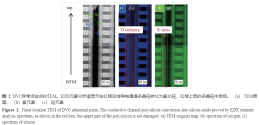There is no direct competition between them in high-end nodes between TSMC and SMIC due to market access barriers. Its not like TSMC can sell its high-end nodes into China market, or SMIC can sell its high-end nodes in Western markets.
Huawei toppled Apple as #1 flagship China market share with **only** DUV 7nm, then even accessing a prototype EUV at 5nm will game-changing for Huawei. Absolutely game changing. Also, China is the world's largest semiconductor and mobile phone market, so the weight of a captive market favors SMIC, even without EUV yield parity or scale.
in December, 2020 Liang Mong said, we have completed 7nm R&D and by next year April, 2021 we will start risky production. we also carried out 8 different cutting edge techs include 5nm/3nm R&D and awaiting EUV machine to carry out final test.Why are we assuming there would be fair competition between SMIC - even a SMIC on the cutting edge - and TSMC in international markets? If we're talking about the mid-2030s timeframe when SMIC would be on the cutting edge of semiconductor manufacturing with enough volume to service the world market, we should also bear in mind that the balance of power vis-a-vis the US and China will be radically different than it is today.
We're talking about a China with ~1500 fifth gens, a 6th gen well into production, 50+ SSNs, H-20s, a complete strategic deterrent, etc. China can exert an enormous amount of pressure on Taiwan to accept restrictions on TSMC's activities, like "voluntary" production curbs a la Plaza Accords and sanctions on US companies that fab their chips at TSMC.
in past 4 years, Chinese academy of science Microelectronics publish many research papers and Patents related GAA transistor and next generation CFET transistor.
Chinese Academy of Sciences' GAA transistor manufacturing process has made a breakthrough, helping nodes below 3nm
its actually funny, Chinese institutes are doing all these research without having single prototype of EUV. this is what we called smart strategy. our preparation has completed now. we are just awaiting first EUV prototype to carry out physical test. all other Non-Litho tools entered in immersion stage 28nm/14nm include photoresists and EDA.
by 2030, the global face of semiconductor will be completely different. not what majority of people thinks now..







